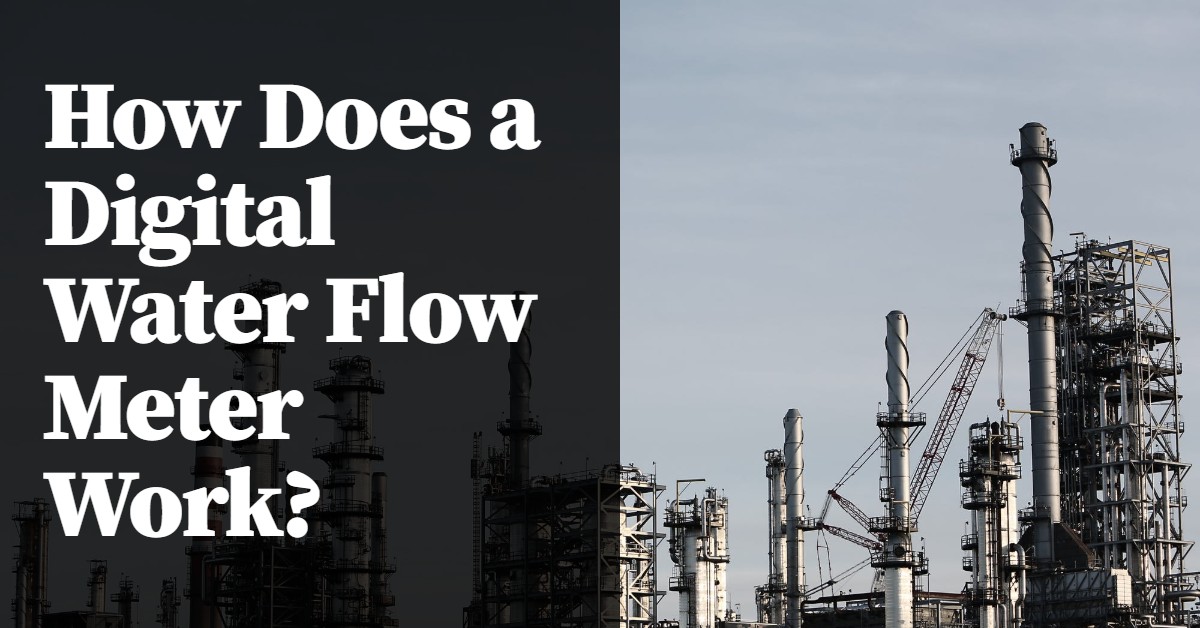A water flow meter is a device used to measure the flow rate of liquids. But, do you know how it works? This article has all the information you need to know about water flow meters.
The accuracy of flow measurement depends on devices called water flow meters. A water flow meter is a measurement tool used to determine the flow rate of fluids that pass-through pipes and identifying a slab leak. Since there are different kinds of fluids with different densities and velocities, water flow meters also come in different types. The type of water flow meter depends on the application, the budget, and the maintenance requirements to repair water damage. The design of each type of flow meter is base on the operating principle.
In this post, we will look at the four main types of flow meters and how they work. Read on for more insights and an understanding of how flow meters work:
Water Flow Meter Types
Mechanical flowmeters
When you are looking for a cost-effective water flow meter type, you need a mechanical meter. This water flow meter is the cheapest and the most commonly used. When measuring the water flow, turbine rotation with a propeller is used. The turbine may have a paddlewheel or a shunt design. Water Flow and fluid measurement is established when a fluid passes through a pipe, causing the turbine or piston to rotate. The turbine or piston will rotate at different speeds depending on the pressure of the flow.
The rotational speed of the blades is directly related to the volumetric flow rate. Although mechanical flow meter types are cheap, they are mainly used to measure clean fluids because dirty fluids may easily block them. They also have moving parts, which increases the maintenance cost and reduces the lifespan. Another setback of mechanical water flow meter types is that when the pressure of water flowing through the pipe is low, they won’t work well, affecting flow accuracy. Denser fluids may also not work well as with this type of flow meter.
Vortex Flow Meter Types
Measuring the flow rate of liquids using the vortex flow meter is based on vortex shedding. Vortices are swirls created when water moves through an obstruction, such as a rock when water flows through a stream. A frequency output is produced when a sensor tab flexes from side to side. The output is directly proportional to the volumetric flow rate.
There are vortex flowmeters known as multivariable vortex flowmeters. These types of vortex flowmeters use one process connection to measure up to 5 process variables. These variables include mass flow, pressure, temperature, density, and volumetric flow. In larger pipes, insertion vortex flow meters are ideal since they are immersed into the flow with hot tapping with a retractor.
Ultrasonic flowmeter
The speed of fluid in ultrasonic flow meters is measured using ultrasound. These flow meter types don’t come into contact with the fluid that is being measured. An ultrasonic signal is transmitted in the direction of the flowing fluid downstream when you are using a transit-time ultrasonic liquid water flow meter. Another signal from the fluid that is flowing upstream is sent back.
The time taken by the sonic pulse to travel upstream is directly proportional to the time taken for the sonic pulse to travel downstream. The velocity is then calculated from the differential time. The ultrasonic meter’s fluid velocity is used to calculate the volumetric flow rate in the pipe. The temperature difference between the hot and cold legs and the volumetric flow rate can also get BTU energy measurement.
Clamp-on ultrasonic meters are ideal when measuring water flow in large pipes. You can also use them in several applications. These water flow meters don’t come into contact with the fluid since they measure water outside the pipe by shooting pulses of sound through the pipe walls.
Magnetic flow meter
To measure the volumetric flow rate of water using magnetic flow meters, a magnetic field is used. This gives the user the flow of liquid flowing through the pipe. Magnetic flowmeters use Faraday’s Law of Electromagnetic Induction. This low suggests that voltage is generated when liquid flows through a magnetic field. The quicker the fluid flowers, the more voltage is created. The water movement is directly proportional to the generated voltage.
Volumetric flow rate is derived by electronics that process the signal. The accuracy of magnetic flow meter types is low, making them poor devices for custody transfer applications. Since there are no ions to measure, they are also not ideal for measuring pure water.
Conclusion
In many industries, the type of application will determine the type of water flow meter used. Water flow meters come in many different sizes and types, and if you don’t have a clue what flow meter will work well with your application, it is advisable to ask the manufacturer.
Author Bio:
Naman Modi is a Professional Blogger, SEO Expert & Guest blogger at Proteus Industries. He is an Award-Winning Freelancer & Web Entrepreneur helping new entrepreneurs launch their first successful online business.









